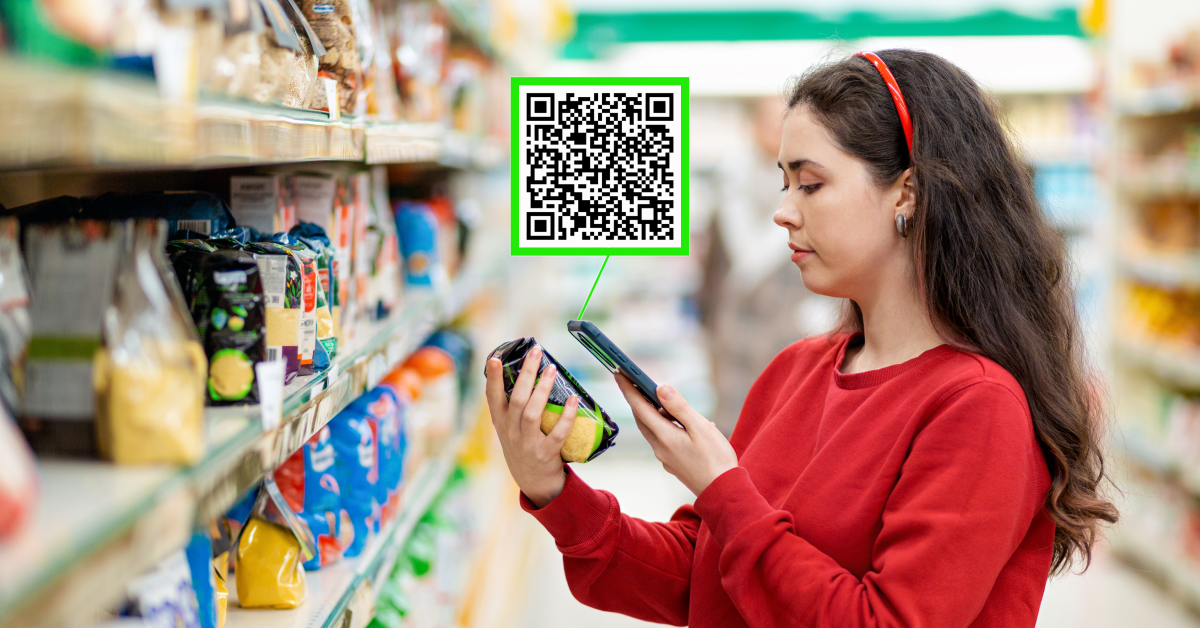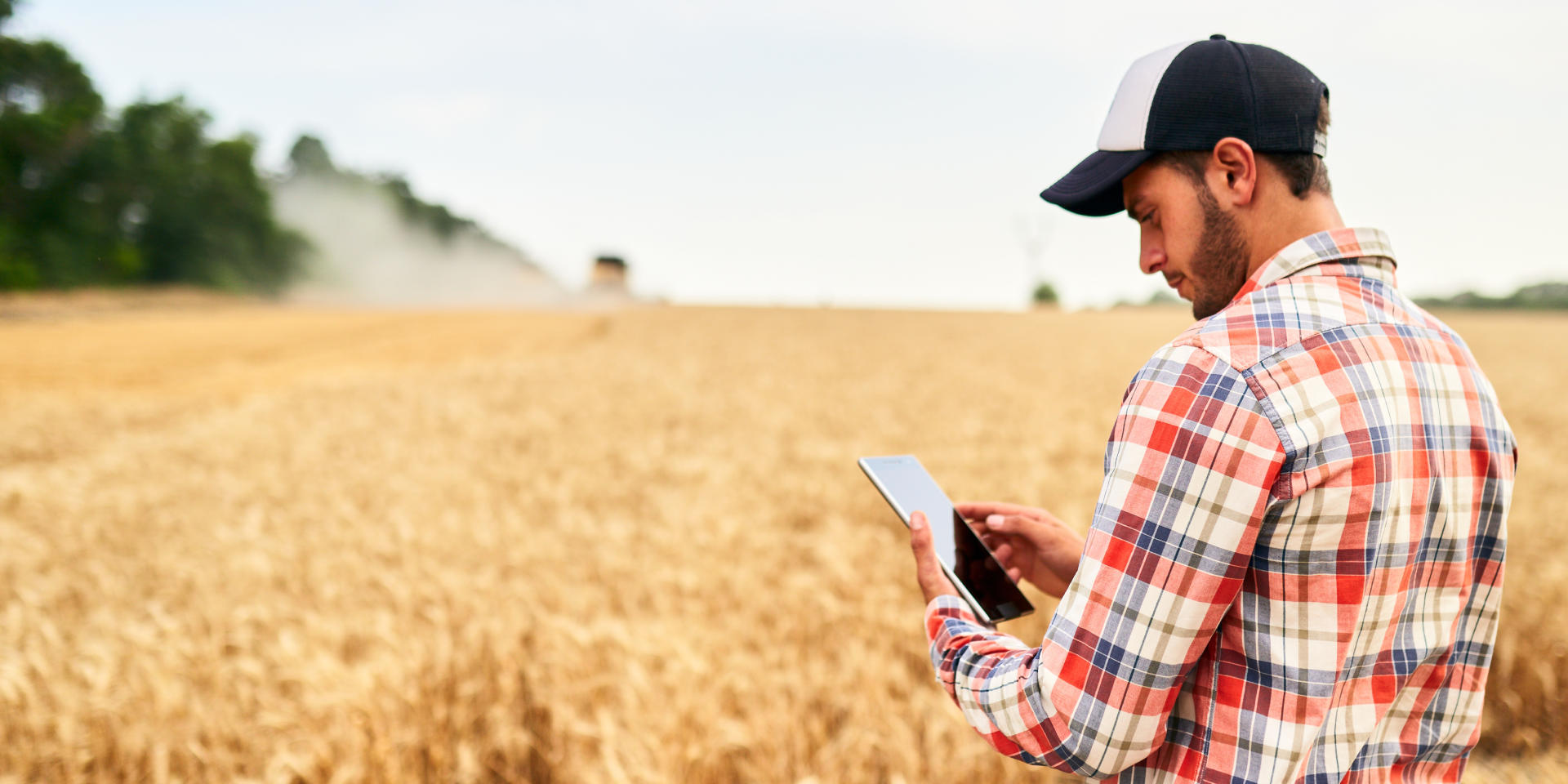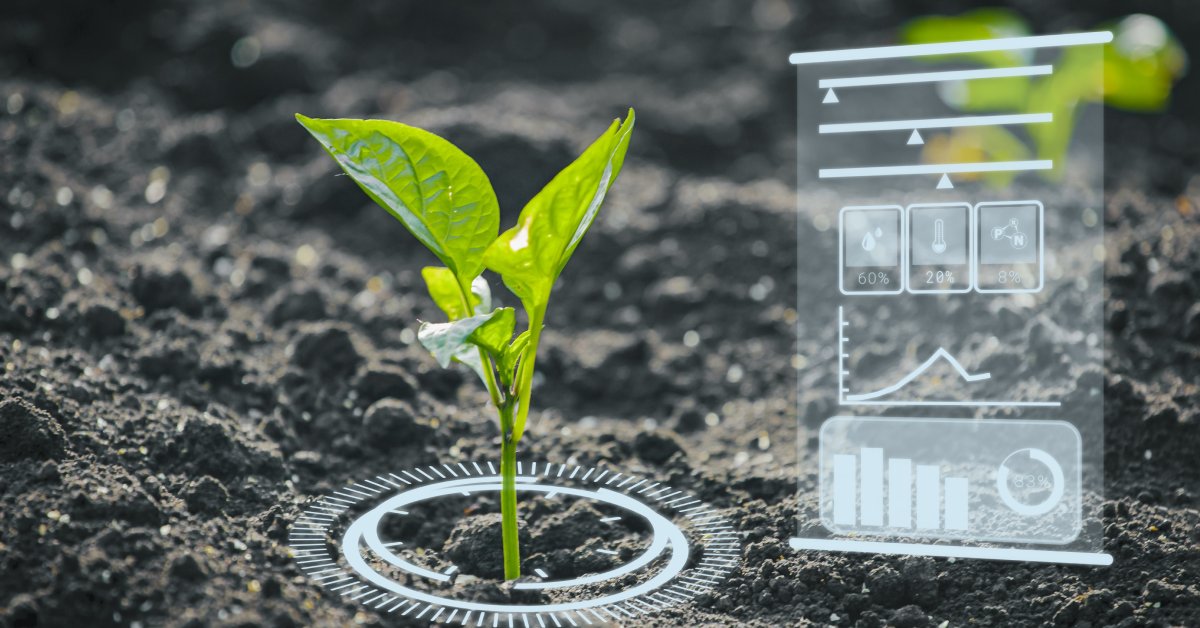Food recalls are quite common in the food industry. We often hear about them in the news and may even receive alerts from our local health authorities. Recalls happen when there is a concern that the food product may harm consumers if consumed. This harm can be due to contamination, mislabeling, or other safety issues.
Product recalls can be quite expensive and difficult to manage for a food business. They can cause financial losses and damage brand reputation, with consumers losing trust. Hence, it is very important to have strict protocols and procedures in place to prevent the occurrence of such events.
However, even after following proper regulations, if a business gets a product recall, it needs to manage it effectively, and for that, a food traceability system can help a lot. It can help the business monitor the flow of its products and quickly remove any contaminated products from the market. This can prevent further harm to consumers and mitigate financial losses.
Food traceability helps track a product at every production, processing, and distribution stage. An efficient food safety and traceability system helps with recalls, improves overall product quality and safety, and maintains consumer trust.
In this blog, we will look in detail at the importance of food traceability, the regulations related to traceability in the US, and how technology can help make the traceability process efficient and easy for food businesses.
What is Traceability in Food Safety?
Food traceability is defined as “the ability to follow the movement of food through specified stage(s) of production, processing, and distribution.” This includes tracking food both backward and forward in the supply chain. Traceability of food allows businesses to record the origin and destination of the product.
Food traceability can be divided into two categories:
-
Internal Traceability:
Internal traceability refers to tracking a product within a single facility or business. It is the ability to monitor the flow of products within different departments of the company. For example, a bakery that produces bread can assign batch numbers to the raw materials used. This way, the bakery knows the flour from the A123 batch and sugar from the B123 batch was used to make a specific bread. Later on, if any issues are identified in the bread, the bakery can trace back to that particular batch of ingredients and take necessary actions.
-
External Traceability:
External traceability means tracking a product’s movement outside the business facility, i.e., from one company to another. A product’s whole journey can be traced through suppliers, manufacturers, distributors, retailers, and even when it reaches the end consumers. Maintaining an external traceability system for food manufacturing can be a complex process, and businesses need to ensure proper documentation and record-keeping to track the product’s journey accurately.
Why is Traceability Important?
While food recalls can significantly impact business operations and cause financial losses, having a traceability system in place can help prevent these risks. According to recent statistics, the food traceability market is expected to grow from $21.08 billion in 2023 to $23.3 billion in 2024 at a CAGR of 10.5%. This increase is mainly due to globalization and increased consumer interest in transparency.
Here are some key reasons why traceability in the food industry is important:
1. Maintains Product Quality
Tracking the product during each stage of the supply chain helps ensure product quality and safety. At any time, regardless of which stage the product is at, the business can quickly identify and address any issues that may arise. This helps maintain food safety standards and ensures that quality is not compromised at any level.
2. Keeps Consumer Well-Informed
In today’s world, consumer demand for transparency and information about their food is increasing. They want to know where their food comes from, how it was produced, and if it meets safety standards.
Previously, Folio3 AgTech built an application for TrueTrac, a traceability solution provider in the US. The app helped consumers scan QR codes on food packaging to access information about the product’s journey from farm to table. Such initiatives increase consumer trust and help businesses build a positive brand image.
3. Reduced Recall Costs
If a proper traceability system for food manufacturing is not used, removing a product from the market when a recall occurs can be very time-consuming and costly. The food business can experience delays in accessing the information about the product in the market, and response time can increase. Monitoring traceability can help overcome these hurdles and reduce the recall scope.
4. Compliance with Regulations
In some countries, like the U.S. and the U.K., having a traceability system for food manufacturing is part of food safety standards. Food compliance and safety regulations constantly update, and businesses need to keep a close eye on their products’ journeys to comply with them. For this, some companies use paper-based forms to maintain records, which can be time-consuming and prone to errors. However, food safety traceability solutions can help automate this process and ensure compliance with recent regulations.
5. Better Supply Chain Management
The traceability of food also brings operational benefits. Tracking products throughout the supply chain helps identify production issues; some traceability systems can act as real-time inventory. This helps improve supply chain efficiency, reducing waste and costs. Moreover, documentation of the product’s manufacturing process can help maximize workflow efficiency.
Understanding the Food Traceability Regulations in the US
The food safety regulatory landscape in the U.S. has changed significantly since 1862, when Abraham Lincoln founded the U.S. Department of Agriculture (USDA) and FDA. Since then, several regulations and amendments have been made to ensure food safety.
The first food recall in the U.S. occurred in 1973 when 75 million cans of mushrooms were removed from the market. This led to the adoption of more stringent regulations, and the Food Safety and Quality Service, later renamed as the Food Safety Inspection Service (FSIS), was formed for meat inspection.
Role of FSIS in U.S. Food Safety Landscape
FSIS is a public health agency in the U.S. Department of Agriculture responsible for ensuring the safety of meat, poultry products, and processed eggs. The FSIS develops policies and inspects these food types to ensure they are safe and correctly labeled.
USDA’s FSIS has specific regulations that all producers must follow regarding food traceability, including:
- Labeling Standards: All meat and poultry products must be properly labeled with information such as establishment number, product ingredients, net weight or volume, handling instructions, etc.
- Recordkeeping: Producers must maintain records of their suppliers’ and customers’ information for at least two years. These records can be paper-based or electronic.
- Traceability: FSIS has a traceback requirement that requires establishments to have a documented process for tracing their sources.
- Country of Origin Labeling (COOL): This regulation requires retailers to inform consumers about the country of origin of certain foods, such as beef, lamb, pork, chicken, and goat meat.
FDA and the Food Safety Modernization Act (FSMA)
In 2011, the Food Safety and Modernization Act was introduced into law. It has enabled FDA to take a more preventative approach to food safety. It also modernized the U.S. food supply chain by focusing on prevention rather than just responding to incidents.
The FSMA established new regulations for all facilities that manufacture, process, pack, or hold human food. These regulations cover preventive controls, mandatory recall authority, and product traceability.
The FDA’s final rule for food traceability has set up requirements for food businesses to help them quickly identify and remove products from the market; hence, losses can be avoided and reduced. The core element of the rule is the use of Key Data Elements (KDEs) for each critical tracking event (CTE) and providing the details within 24 hours to the FDA or any time agreed upon by the FDA.
KDEs are the pieces of information that must be recorded and monitored during each stage of the food supply chain. These elements are important in making the food traceability process efficient by providing a standardized format for data collection. Examples of KDEs include:
- Batch Code or Lot Number
- Quantity and Unit of Measure of the Food
- Product Description
- Location Description
Critical tracking event, or CTEs, refers to the specific stages the product moves in the supply chain. During each stage, the information (KDEs) needs to be recorded. Examples of CTEs include:
- Harvesting
- Cooling
- Initial Packing
- Shipping
- Receiving
FDA’s New Era of Smarter Food Safety
To implement KDEs effectively, businesses need digital systems to capture and maintain KDEs efficiently at each critical tracking event. They also need to ensure that the data is standardized across the supply chain and that employees are well-trained to accurately record data at each stage.
In July 2020, the FDA announced the New Era of SMarter Food Safety Blueprint that aimed at the following four core elements:
- Tech-enabled Traceability: This element focuses on using digital technologies to improve the food traceability system across the whole supply chain. The traceability system must provide real-time updates on the product’s location and status so that if a recall occurs, it can be quickly traced and removed from the market.
- Smarter Tools and Approaches for Prevention and Outbreak Response: This element emphasizes using advanced tools and methods to prevent food safety issues and respond more effectively when outbreaks occur.
- New Business Models and Retail Modernization: The third element encourages the adoption of modern food production and distribution models and caters to food safety challenges associated with the rise of online food sales.
- Food Safety Culture: The last element aims to promote a culture of food safety within organizations and across the food industry. It involves training workers on farms and in food facilities about food safety.
How Digital Transformation Improves Food Traceability Outcomes
Many businesses still rely on manual record-keeping procedures and use paper-based traceability systems with high chances of human error. Searching between the documents and compiling all the relevant data before audits is also very time-consuming. Management has to spend a significant amount of time preparing for the audit. Moreover, updating processes and forms with the latest regulations and compliance procedures can be time-consuming and costly.
This is where digital food safety and traceability solutions come to the rescue. To this day, several technologies and advanced tools have been introduced to make the food traceability process much simpler and easier.
End-to-End Digital Food Safety & Traceability Solutions
Digital traceability solutions provide end-to-end traceability of the entire food supply chain, from raw materials to consumer purchases. Here are some examples of technologies and companies that use them to enhance their food safety and traceability process:
Barcodes and QR Codes
Fonterra, a dairy giant from New Zealand, launched a program in 2017 where consumers could scan a QR code on their products and access product details such as batch number, the production and expiry dates, the region from which the milk was sourced, and an inspection certificate. By 2019, almost all of Fonterra’s manufacturing plants had been integrated into the system, and detailed information on each product container had been provided through QR codes. Uniqode’s QR code generator is a valuable tool in making this possible, ensuring consumers have access to critical product information at their fingertips.
RFID (Radio Frequency Identification)
RFID technology uses a small chip and tag attached to the product, which can be scanned by a reader device. The tag contains electronically stored information about the product.
Chipotle Mexican Grill is one of the first restaurant companies to deploy RFID technology to optimize its traceability operations. The RFID tags allow Chipotle to track ingredients from suppliers to its restaurants in real-time. The technology also gives real-time information about inventory across distribution centers and restaurants.
Blockchain
Blockchain technology improves food traceability by creating a secure and transparent digital ledger that tracks food products throughout the supply chain. Information about the food, like origin, processing details, and storage conditions, is recorded, which stakeholders can access anytime.
Walmart partnered with IBM to implement a blockchain system that tracks mangoes from farms in Mexico to Walmart stores in the United States within 2.2 seconds.
IIoT-Enabled Sensors
Industrial Internet of Things (IIOT) sensors are embedded in food product packaging and can track temperature, humidity, and location data. These sensors feed real-time data to the cloud, which stakeholders can access anytime.
Using such sensors can be a great way to avoid cargo theft, which costs supply chain vendors and retailers up to $30 billion annually. By getting a real-time update on the product’s location, food suppliers can know when their product reaches its destination.
Food Safety Software/ ERP systems
Companies use food safety and compliance software or fully integrated ERP systems to digitize their manual record-keeping process for HACCP plans and avoid using paper-based forms for auditing. The software can also analyze the data to spot potential issues and provide alerts so that timely action can be taken.
With Folio3 AgTech’s food quality and compliance software, a leading beef processing plant in Washington was able to digitize its reporting process, making audits easier and faster.
How to Track Products and Maintain Food Safety Using Folio3 AgTech Food Safety Software?
Folio3 AgTech has been providing tech-driven solutions to the agriculture industry for the past twenty years. It is well aware of the challenges that companies in the industry face when it comes to maintaining quality and fulfilling regulatory requirements.
Folio3 AgTech’s food safety compliance and traceability software has enabled several food businesses to digitize their manual processes and maintain compliance with food safety regulations.
The software offers several features that can help businesses keep track of their products and ensure food safety:
- Automated Food Safety and Compliance Schedules: The software allows businesses to create and schedule automated compliance tasks such as daily, weekly, or monthly inspections, supplier audits, equipment checks, etc. These schedules can be customized according to each business’s specific needs.
- Customizable Checklists: Folio3 AgTech food safety and compliance software has customizable checklists for different inspections and audits. This helps businesses maintain consistency in their processes and ensure all necessary aspects are checked for compliance.
- Advanced Real-Time Reporting and Analytics: The software provides businesses real-time data and analytics on food safety and compliance. This can help businesses identify areas for improvement and potential risks and take timely action to maintain food safety standards.
- Alerts and Notifications: The software sends automated alerts and notifications to stakeholders when a food safety issue is identified or an inspection/audit is due. This helps keep track of tasks and take timely action.
- Compliance Management: Folio3 AgTech’s food traceability software helps businesses manage their compliance needs. It maintains detailed records of all inspections and audits, tracking any non-compliances and corrective actions taken, making it easier to maintain regulatory requirements.
Conclusion
Given the current industry dynamics and the growing interest of consumers in food safety, it has become imperative for businesses to invest in technologies that can help maintain the transparency and traceability of their products.
Folio3 AgTech’s food safety and traceability software helps ensure that all your product information is well-organized and stored properly in one place. Its advanced features, such as automated schedules, customizable checklists, real-time reporting, and alerts, can significantly improve the quality and efficiency of food traceability processes for businesses across the food industry.
FAQs
What is an Example of Food Traceability?
In 2011, a deadly Listeria outbreak linked to contaminated cantaloupes resulted in 30 deaths and over 140 illnesses across the United States. Tracing the source of the contamination was very important to prevent further illnesses.
Fortunately, the cantaloupe industry had adopted a voluntary traceability program using barcodes. These barcodes provided information about the farm where the cantaloupes were grown, the packing facility, and the distribution route. By utilizing the barcode data, investigators were able to trace the contaminated cantaloupes back to a specific farm in Colorado within a week.
What is the Food Traceability Rule?
The Food Traceability Rule is a proposed regulation by the FDA that requires additional recordkeeping for certain foods on the “Food Traceability List” to help quickly identify and remove potentially unsafe products from the market. This rule aims to enhance the tracking and tracing of high-risk foods in order to respond more effectively to foodborne illness outbreaks.
How to Improve Traceability in the Food Supply Chain?
To improve food traceability, businesses can use the following five ways:
- Adopt digital solutions such as food safety and compliance software.
- Implement tracking technologies like RFID tags or IIoT sensors on product packaging.
- Create a centralized system to store and manage all data related to products, suppliers, and quality control processes.
- Collaborate with supply chain partners to implement a standardized traceability system.
- Regularly train employees on traceability procedures and ensure compliance with regulations.
Who is Responsible for Food Traceability?
According to the law, food business operators are responsible for food traceability. A food business operator is any person or entity that carries out activities related to any stage of the food supply chain, from production and processing to distribution and sale.
Is Traceability Part of HACCP?
Traceability is not a mandatory component of HACCP. However, it can be a complementary tool that supports HACCP by facilitating recall efficiency and verifying control measures.







